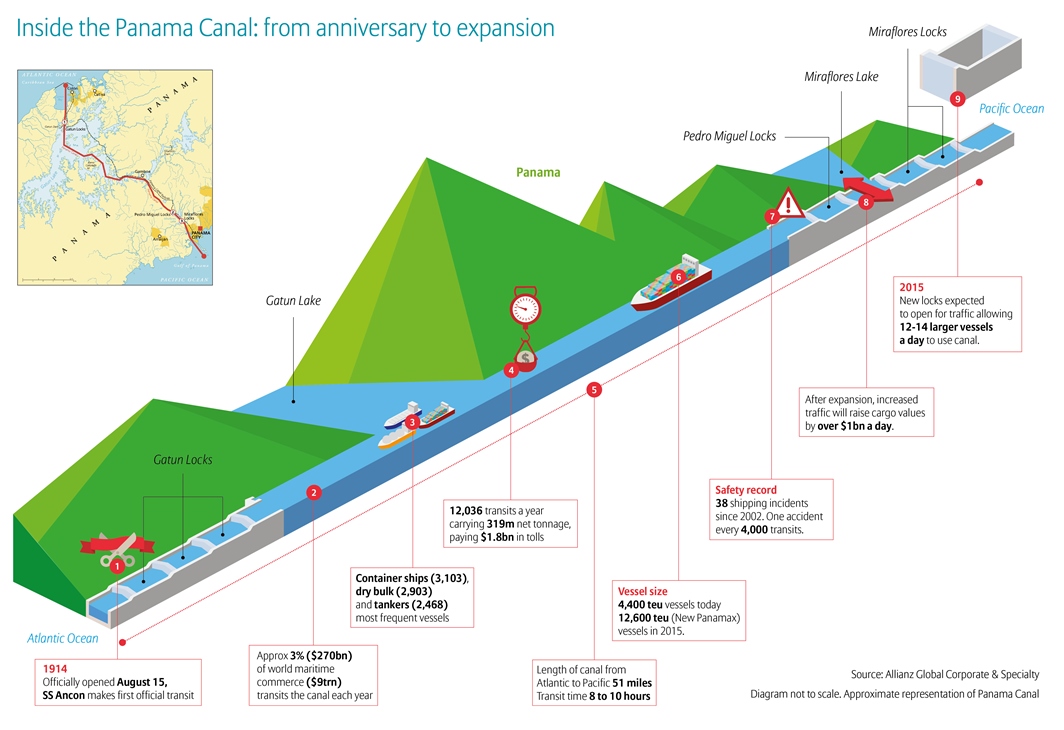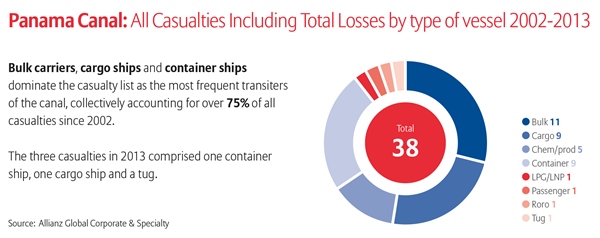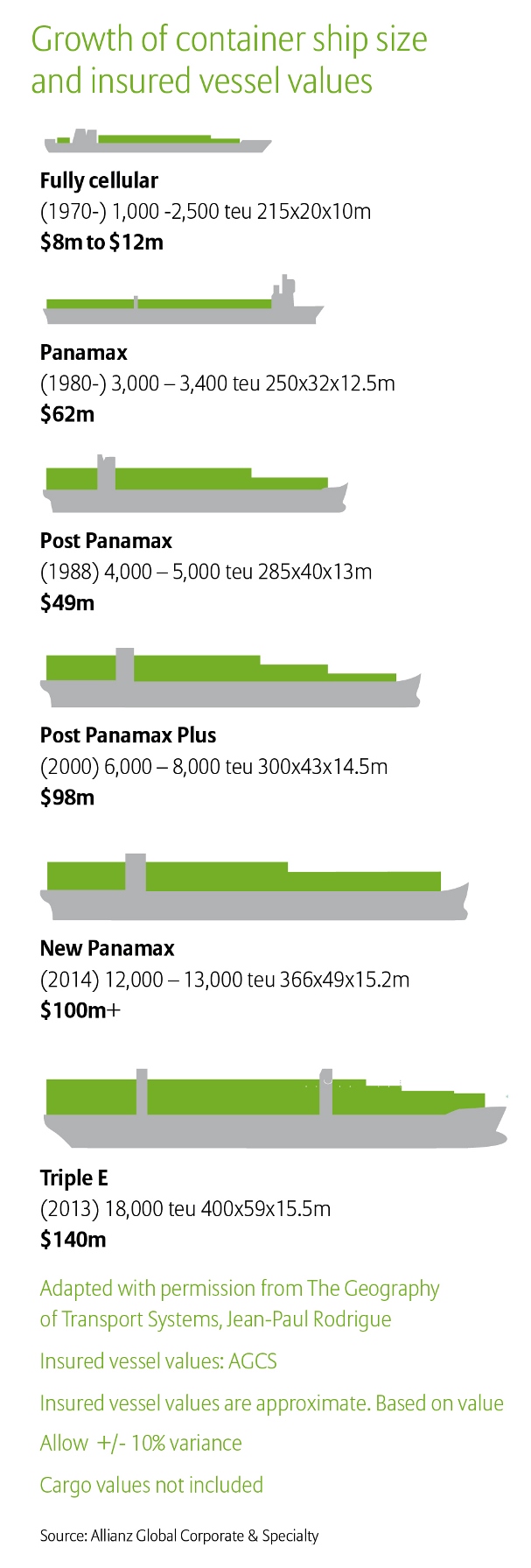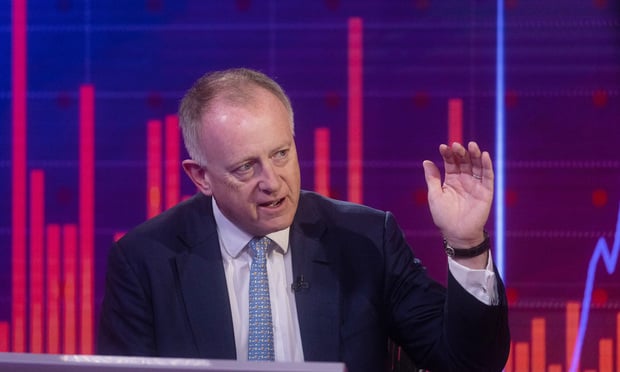When the Panama Canal officially opened 100 years ago, it forever changed the face of world maritime commerce and shipbuilding. Today, nearly $9 trillion in seaborne commerce transits the canal, with more than 12,000 vessels making the trip each year. Of them, some 3,100 are container ships, another 2,900 are dry bulk ships, and around 2,500 are tankers.
The canal is 51 miles long and takes 8-10 hours to transit, but the big limitation is its width. Today, the canal can admit ships up to 4,400 teu (twenty-foot equivalent). The teu is basically the size of a standard, 20-foot-long cargo container. With global shipping on the rise, the pressure has been on to make the canal much bigger, to admit more ships, and to admit larger ships.
An effort to widen the canal began in 2007, and it will be complete in 2015. Once it's widened, the canal will be able to admit New Panamax vessels of up to a mind-boggling 12,600 teu (nearly triple the current vessel size limit). The wider canal will also be able to admit 12-14 larger vessels a day, representing a significant increase in total canal traffic.
All of these improvements bring with them a host of new insurable risks that have carriers such as Allianz Global Corporate & Specialty (AGCS) working hard to craft risk management solutions for their clients. AGCS is a leading insurer of ocean marine and cargo, and it recently released a report on the risks the canal presents, which you can download here.
(Click on infographic below for high resolution.)
The Panama Canal is the safest of the world's major canals.
There is a shipping incident in the Panama Canal about 1 in every 4,000 ships that go through. That might not sound great, but it compares very favorably to the Suez Canal, where there is an incident for every 1,100 ships. The Kiel Canal has an incident for every 830 ships.
The Panama Canal has seen 180 shipping casualties over the last 20 years, for an average of about nine a year. Recent efforts to improve safety, however, have significantly improved things in the last 10 years. There have only been 30 casualties in the last decade.
More than three-quarters of all shipping incidents in the Panama Canal involve bulk carriers, cargo ships and container ships. The most common cause of incidents are contact with the walls of the canal (53 incidents), and collisions (50 incidents) with other vessels – together, these account for almost 60% of all incidents. Machinery damage/failure (41 incidents) counts for another 20% of all incidents.
There were only three casualties in 2013: one involving a container ship, one a cargo ship, and one a tugboat.
The bigger canal means bigger ships, which means bigger risks.
The expanded capacity of the canal will mean that the amount of insured goods passing through will rise by $1.25 billion or more, according to Allianz. This is to say nothing of the hull risk involved. The “fully cellular” cargo vessels used to transit the canal back in the 1970s carried 1,000-2,500 teu and had a hull worth of about $8M to $12M. The Panamax vessels that came after in the 1980s are 3,000-3,400 teu and worth about $62M. In 1988, we saw the Post Panamax vessels, with 4,000-5,000 teu and worth around $49M. Post Panamax-Plus vessels hit the scene in 2000, carrying 8,000 teu and worth around $98M. The New Panamax vessels hitting the vessels in 2014 are 12,000-13,000 teu and their hull value alone tops $100M.
These are not the largest ships on the water, however. Triple E cargo ships can carry 18,000 teu and are worth some $140M. These ships pose considerable ocean marine risk simply because so much value is concentrated on a single ship. One of those Triple Es goes down and you are not just looking at the loss of a very expensive hull, but you've got an Omega-class headache as you must deal with so much lost cargo. For insurers, this gets especially hairy because they might have numerous clients all on the same vessel, but not otherwise correlated with each other. This is the kind of exposure concentration no underwriter in his or her right mind would be happy about.
Triple E ships cannot transit the Panama Canal, however; they are meant for the Suez Canal. But their mere existence is already having an impact on ocean marine risk and insurance in general.
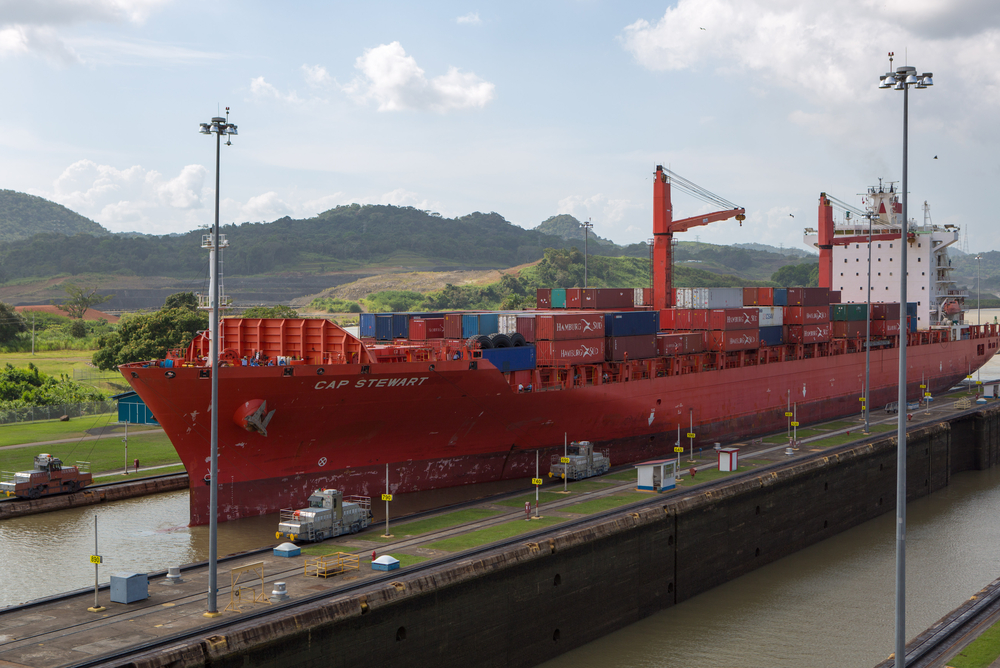
We are facing Peak Cargo.
The trouble with the Triple E ships is that they are already making the expanded Panama Canal obsolete before it even opens. And that is a curious inversion of things. “The Panama Canal has been influencing shipbuilding for 100 years,” said Captain Andrew Kinsey, a 23-year veteran of the Maersk Line with more than a few years of experience on Panamax vessels. But as global shipping appetites have grown in recent years, shipbuilders have raced to keep up with demand, hence the deployment of the Triple E ships. But at the same time, the infrastructure has failed to keep pace, Kinsey says, which means that for the time being, Triple E is about as big as cargo ships can get without causing serious logisitical problems.
As it is, there are only a handful of ports in the United States that are deep enough to handle such large vessels. Most major West Coast ports can handle them, but on the East Coast, only Baltimore and Norfolk are at 50 feet. Miami is dredging from 42 to 55 feet. The dredging in New York is complete, Kinsey says, but the Bayonne Bridge still has to be raised to it can accommodate the increased air draft of the larger ships.
Then there is the issue of having sufficient cranes, container handling yards and other infrastructure in place to properly service such ships. Most ports simply are not ready to offload the volume of cargo that the Triple E and New Panamax vessels bring, so what is developing is a hub system wherein the biggest ships dock at the biggest ports, and smaller “feeder ships” from smaller ports handle partial cargo deliveries to and from the large ports. It is all a bit like how Fed Ex delivers from its national HQ to regional distribution centers to local distribution centers to actual delivery sites. Ocean cargo is going in the same direction.
On the negative side, this means that the largest vessels can get stuck waiting for their turn in port, which exposes them to additional storm risk and other maritime risk. On the plus side, a hub system actually would decrease the number of times a container is handled in transit, believe it or not, and handling is the number one cause of damage to cargo. (This is especially true for refrigerated containers or containers with a controlled environment; you don't want those getting unplugged accidentally or banged up.) So the tradeoff is worth it, ultimately.
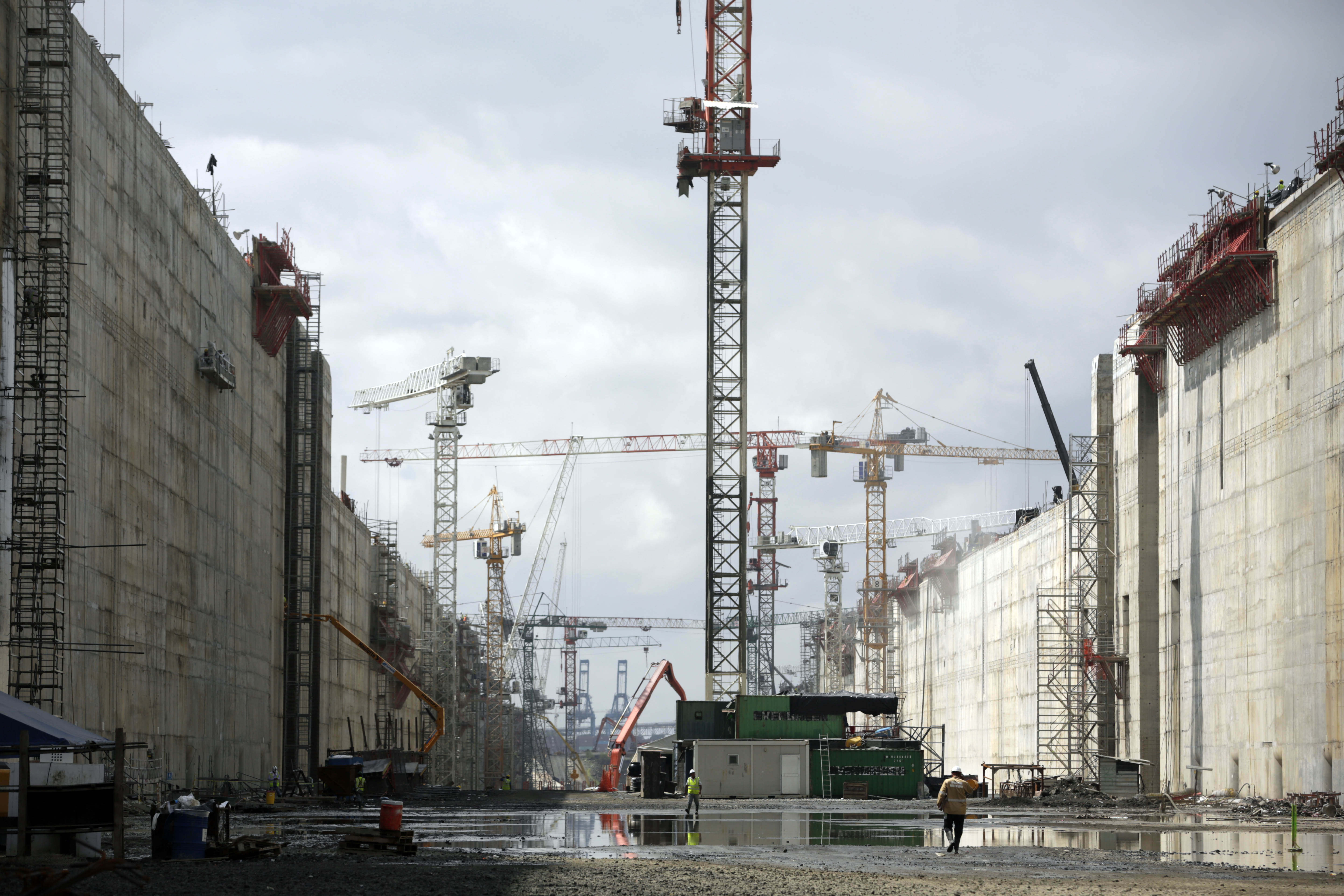
A more complicated canal.
Another piece of good news/bad news coming out of the Panama Canal's expansion is that the locks used to raise and lower the level of the water throughout the canal are going to be replaced with much more complicated mechanisms.
The upside of this is pretty significant – the canal isn't just an artificial river from the Atlantic to the Pacific. It runs into and out of Gatun Lake, a massive artificial lake created to make the canal's initial excavation easier. The new locks will recycle 60% of the water used to raise and lower the ships, and reduce the overall amount of water needed to run the canal by 7%, post-expansion. This is big because during dry seasons or el Ninos, the level of Gatun Lake can drop, which might prohibit the passage of larger ships. The new locks will reduce that exposure, which is substantial when you consider that the lake has no tides to help grounded ships get going again.
On the flip side, the more complicated locks mean that there are more components that can fail, and if any of the locks malfunction, break or otherwise fail to operate properly, then the traffic backup this could cause on the Canal would be significant. Remember the traffic lineup we talked about a few slides ago, and how ships waiting to go through the canal increases maritime risk? That's when the canal is working properly. The last thing it really needs is a traffic jam thanks to a lock having a bad day.
To fully grasp the idea of what kind of traffic goes through the Canal, go to Google Earth sometime and look at the Canal. You can see ship after ship after ship queued up on either side, just waiting to go through.
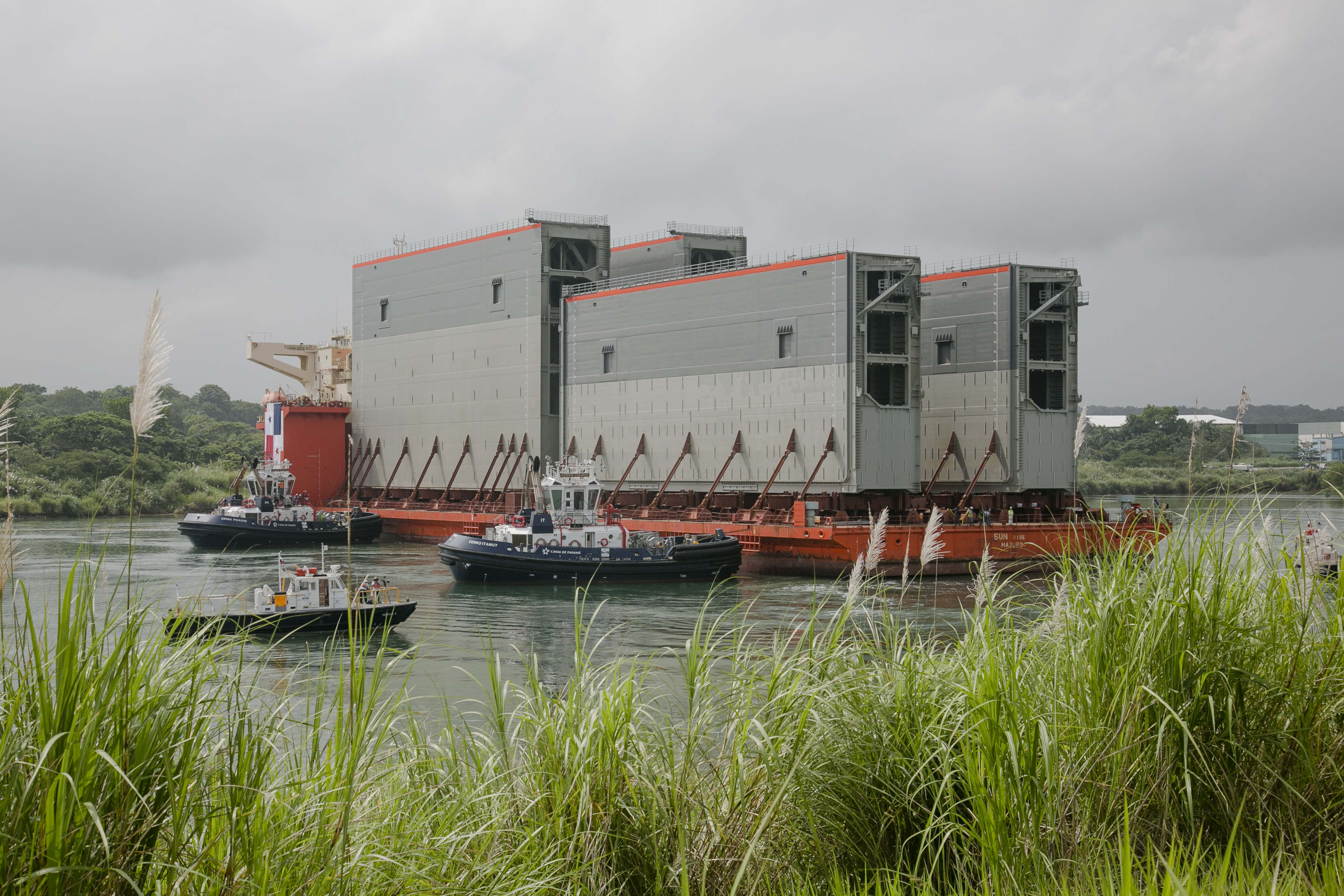
There are no fender-benders with supermassive cargo ships.
Those $100+M hull values we mentioned before? They really become important when masters are trying to stay out of each others' way while waiting their turn to enter the canal, and when lined up on Gatun Lake. You'd think that the oceans being as big as they are, that ship captains could easily stay out of each other's way. But the increased traffic volume the widened canal will bring means that collisions between ships are likely to become the #1 risk for vessels transiting the canal, Captain Kinsey said. (Currently the #1 risk is colliding with the canal itself.) He added that most incidents happen on the coastal waters, usually by crews that are already fatigued from their transit across the ocean.
Interestingly, Kinsey noted that between Baloa, Panama and Colon, Panama, the traffic separation system in place is much less chaotic than it is for the Suez Canal, which is a one-way canal, and creates much more intense traffic patterns as ships are “lining up on the northbound leg at zero-dark-thirty.”
Since 1993, there have been 50 collisions involving vessels at or in the Canal. The worst year was 1998, when there were 10 collisions. Things have gotten much safer in recent years, however. There were four collisions in 2004, none in 2005-6, one in 2007, none in 2008-2011, and two in 2013.
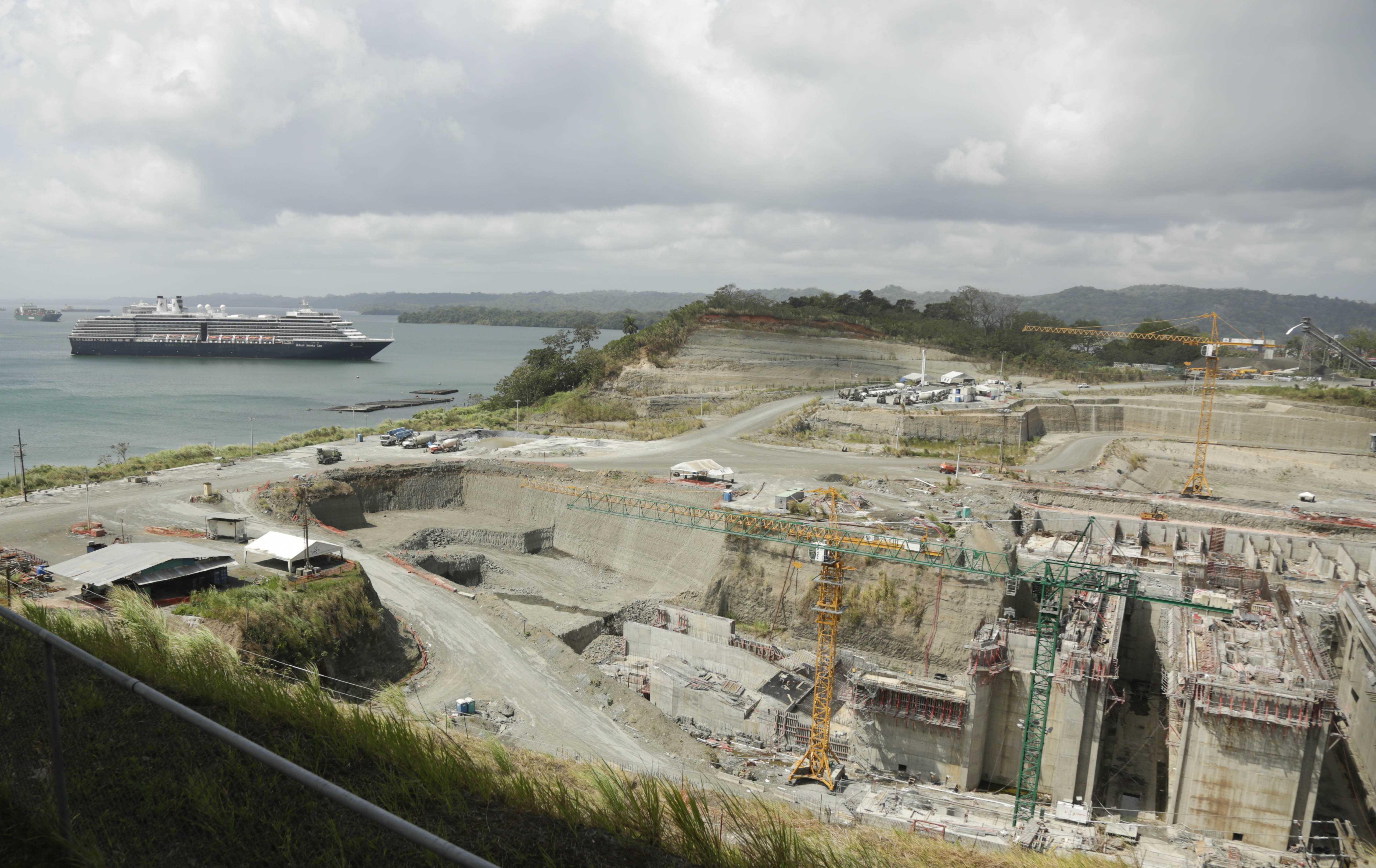
It's easier to drive into the canal than you think.
Since 1993, there have been 53 incidents where ships made contact with the canal itself. Like ship collisions ,these numbers have gone down considerably since the late 1990s, when new safety initiatives took hold, but it is still a major risk.
As a Panamax vessel enters a lock, Captain Kinsey explains, it is displacing a huge amount of water. There are tractors (called “mules”) on the lock walls helping to pull the ships in, but the ship itself has to throttle up to about half to get into the lock. Kinsey likened it to putting on a shoe that is a half-size too small, and with massive ships that are far easier to speed up than to slow down. This means the ships need to be lined up perfectly before they begin their approach, and they need to maintain that perfect alignment throughout the maneuver.
If a ship gets off its heading, or if the winch on one of the mules gets twisted, the ship can turn and create a “bank cushion” where in the interaction between the ship's propeller and the water creates a low-pressure area that will actually suck the ship into the canal wall. Captain Kinsey says this happens more frequently on the Suez Canal, where there are shoalings that increase the low pressure areas. In ferry crossings and the like, when ships have low pressure problems, they can simply veer off. But in the canal, there is nowhere to veer off to.
This makes the interaction between the ship's master and the canal pilot crucial, which brings us to our final point…
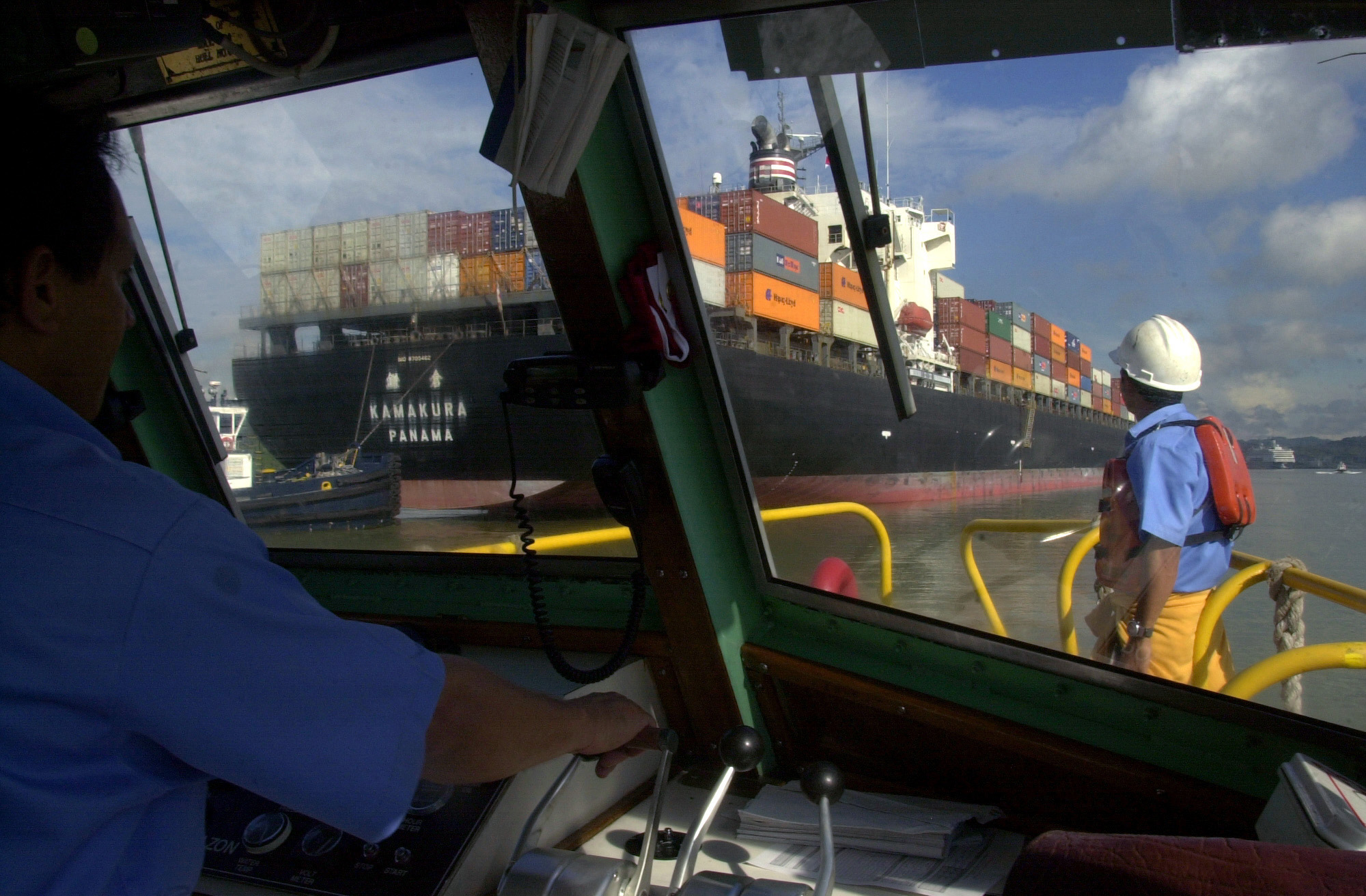
…this is not a job for amateurs.
In most canals, there are canal pilots who enter the wheelhouse and advise the masters on how to get through the canal without incident. On the Panama Canal, however, the canal pilots actually take over the vessel and drive it through themselves. Since every vessel handles differently, this calls for the utmost training, skill and experience.
Thankfully, Captain Kinsey notes, one does not simply become a Canal Pilot easily. It is a very specialized job that requires a great deal of prior experience and training that never ends. Panama's canal pilots undergo constant training to ensure that they are at the height of their skills when they pilot ships through the canal. Panama is itself is a signatory of the international Standards of Training, Certification & Watchkeeping, the global standard for maritime safety and training certification.
Those same pilots are undergoing intensive training right now so that when the widened canal opens for business, the pilots will be ready. The pilots are already training on ship simulators and there are plans to charter post-Panamax ships for the pilots to practice on well before they start guiding customers through the waterway.
Want to continue reading?
Become a Free PropertyCasualty360 Digital Reader
Your access to unlimited PropertyCasualty360 content isn’t changing.
Once you are an ALM digital member, you’ll receive:
- Breaking insurance news and analysis, on-site and via our newsletters and custom alerts
- Weekly Insurance Speak podcast featuring exclusive interviews with industry leaders
- Educational webcasts, white papers, and ebooks from industry thought leaders
- Critical converage of the employee benefits and financial advisory markets on our other ALM sites, BenefitsPRO and ThinkAdvisor
Already have an account? Sign In Now
© 2025 ALM Global, LLC, All Rights Reserved. Request academic re-use from www.copyright.com. All other uses, submit a request to [email protected]. For more information visit Asset & Logo Licensing.


